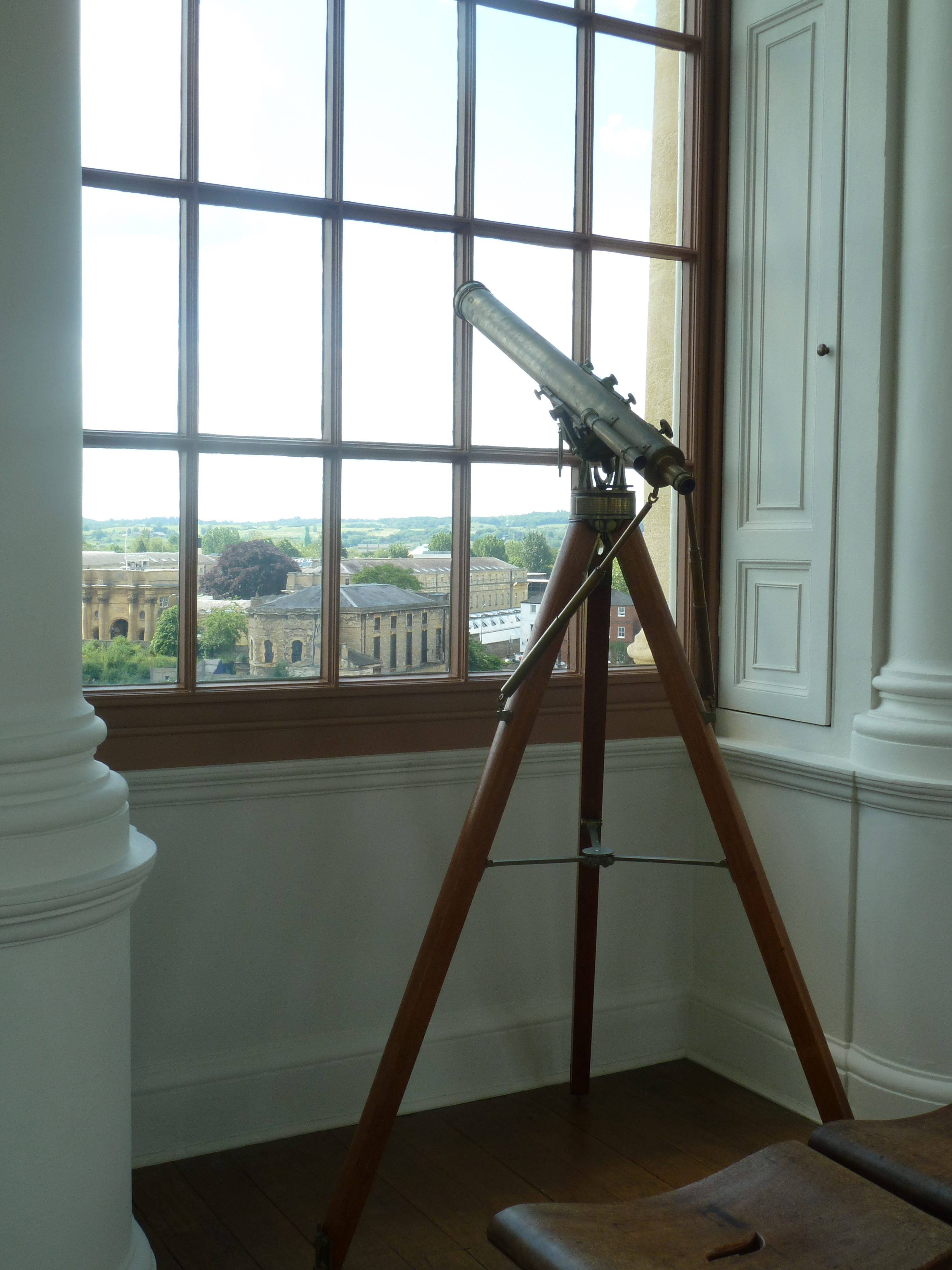The history of the Duke of Marlborough Telescope

The Duke of Marlborough Telescope or Marlborough-Tulley telescope was used for casual observations from the Radcliffe Observatory in the late 19th century.
In 1781, ‘beyond the meridian’ observing – the use of telescopes to scan the sky rather than concentrating purely on North-South meridian crossings – had taken off, following William Hershel’s discovery of the planet Uranus from Bath. The patronage and fame he obtained attracted amateurs to search the skies with small portable telescopes.

The Duke of Marlborough Telescope was used for casual observations from the Radcliffe Observatory in the late 19th century
The Radcliffe Observatory Tower Room, finished in 1795, was ideal for this type of observing because small instruments could be maneuvered out onto the balconies, and the dark skies north of Oxford were ideal for exploratory work, in addition to the serious meridian timings measured on the ground floor.
The three and a quarter inch equatorially-mounted telescope with a doubtlet aplanatic lens was the first of its type and cutting-edge at the time of its construction.

The telescope was the first to successfully mage the chromosphere (Sun’s inner atmosphere) in fine detail
This type of lens is a combination of two lenses at the objective (‘sky’) end, and the term ‘aplanatic’ refers to the geometry which helps to correct for aberrations in the image produced. The result is superb clarity and ability particularly to resolve (or separate) the images of close objects, for example, Double stars.
Its journey to the Radcliffe Observatory began in 1844, when the telescope was given to John Spencer-Churchill, the 7th Duke of Marlborough (a trustee of the Radcliffe Observatory and Winston Churchill’s grandfather) for use at his Blenheim seat.

Associate Fellow Charles Barclay standing with the boxed telescope on a lorry on its arrival at Green Templeton from South Africa
The instrument became known as the Duke of Marlborough Telescope when, after the Duke’s death, it was given by his widow the Dowager Duchess of Marlborough in 1884 to the Radcliffe Observer Edward Stone (Observer from 1879 to 1897), who was desperate for new instruments.
Stone used the telescope for casual observing and specifically chose the excellent optics and portable nature of the Marlborough for his successful trip to view the total solar eclipse from the Novaya Zemlya archipelago in the Arctic Ocean in 1896. The telescope was the first to successfully mage the chromosphere (Sun’s inner atmosphere) in fine detail.

The telescope seen carefully packed in protective layers inside its transportation box
It remained at the Radcliffe Observatory in Oxford until 1935, when the Observatory became part of the South Africa Astronomical Observatory (SAAO). Under the direction of Harold Knox- Shaw, the last UK-based Radcliffe Observer, the telescope was relocated to Pretoria, South Africa.
Return to Green Templeton College
The telescope was rediscovered in 2009 unused in a box in the office of Professor Phil Charles (then Director of SAAO). Through negotiations with South African Heritage a loan was arranged.
On 1 June 2012, just before the college’s celebrations to mark the last 21st Century transit of Venus, the telescope returned to the Radcliffe Observatory and now stands in the Tower Room where it originally stood.

An inscription on the telescope reads: ‘This valued instrument given to John Winston, 7th Duke of Marlborough’.
Green Templeton is grateful to the Radcliffe Observatory in South Africa and South African Heritage for the generous loan of the Duke of Marlborough Telescope, and to Professor Phil Charles and his wife Anne Charles at SAAO for their help in the protracted negotiations, and especially to Dr Elman Poole, late Common Room Member, whose generosity and support helped bring the telescope back to Oxford.
Oxford Astrophysics
The sub-department is one of the largest in the country and leads the UK in many research fields. The Philip Wetton 16-inch telescope (on top of the Denys Wilkinson Building on Banbury Road) is used by undergraduates and graduates but also provides a focus for outreach to schools, teachers and members of the public.
A link exists between Green Templeton, Oxford Astrophysics and Marlborough College, where Charles Barclay directs the 10-inch Barclay Equatorial telescope (ex-Radcliffe).

Green Templeton is grateful to the Radcliffe Observatory in South Africa and South African Heritage for the generous loan of the Duke of Marlborough Telescope

